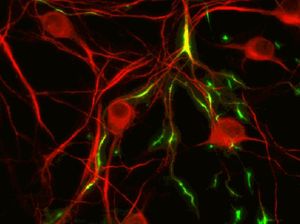A Different Kind of "TREK"kie.
Scientists from the U.S. Department of Energy’s Lawrence Berkeley National Laboratory and the University of California Berkeley have delineated an alternative pathway for antidepressant function. Fluoxetine, the active compound in the widely-prescribed antidepressant drug Prozac, primarily acts as a selective serotonin reuptake inhibitor (SSRI). Many pharmaceutical agents, however, are known to exhibit multiple functions, and fluoxetine is now thought to act by a second mechanism. TREK1, a potassium channel expressed in reward-related basal ganglia, has been associated with symptoms of depression and implicated in mood regulation. Notably, it is inhibited by fluoxetine. Earlier studies have shown that TREK1 “knock out” mice display a depression-resistant phenotype, their behavior being similar to mice treated with fluoxetine. This newfound beneficial role of fluoxetine may open up a new vessel for antidepressant treatments.
phenotype, their behavior being similar to mice treated with fluoxetine. This newfound beneficial role of fluoxetine may open up a new vessel for antidepressant treatments.
Ehud Isacoff, a neurobiophysicist in UC Berkeley’s Department of Molecular and Cell Biology, and Guillaume Sandoz, a TREK1 specialist, looked at the molecular mechanisms underlying the TREK1 channel’s function. When its C-terminal domain is bound to the plasma membrane, the TREK1 channel remains open, but when the tail is unbound, the channel closes. Isacoff and his research team separated the C-terminal domain from the rest of the protein, and tagged it with green fluorescent protein. They then used voltage clamps to measure electrical currents, and fluorescence to observe the status of the channel, finding that the addition of fluoxetine causes the isolated C-terminal domain to dissociate from the membrane. This prevents current from flowing through the channel, and effectively inhibits TREK1 function. Although the effects of the C-terminal domain’s position still need to be observed with a completely intact protein, Isacoff and his team foresee promising results.
To read Science Daily’s review, click here. For the full article, click here!